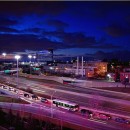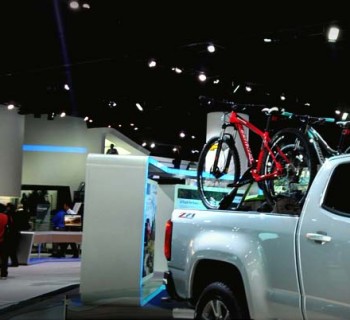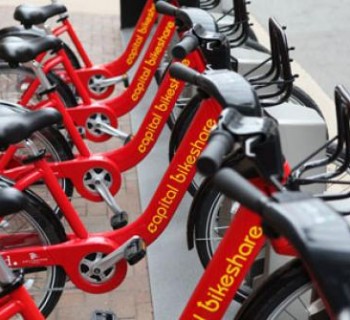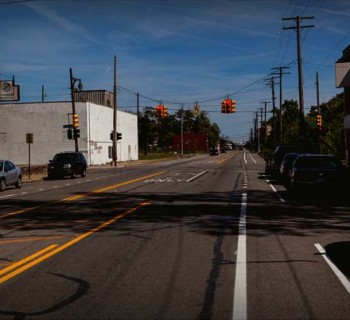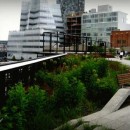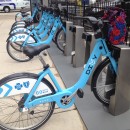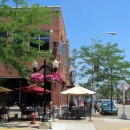OPINION—The night before I began reading Richard J. Jackson’s book, “Designing Healthy Communities,” I called my friend who I was visiting the next day in Tampa, Florida, to share my hotel information. She told me, “Your hotel is in the heart of everything, but you can’t walk anywhere. You’ll get killed crossing the street.”
I was halfway through the book by the time my plane landed in Tampa. And Jackson’s ideas were starting to gel. I saw Tampa through new eyes, and my friend was right. The busy five-lane road where my hotel stood was indeed a deathtrap for pedestrians. It was across the street from a giant mall surrounded by giant parking lots; cater-corner from five – count ‘em, five – chain restaurants that you could find on any corner in America; just down the road from the airport; and a mere six traffic-clogged miles by car to central downtown.
“… we do not create well-being simply by medicating people at the end of their lives.” ~Richard Jackson
Convenient? Yep. Peaceful, beautiful, safe? Nope.
What’s wrong with that section of Tampa, and what’s wrong and right with many communities, including our own, is what Jackson addresses in Designing Healthy Communities, one of the most inspiring and well-written nonfiction books I’ve read in years. I smiled, gaped, learned (a lot), laughed, and yes, on the very last page, actually cried.
As a doctor and leader in public health, Jackson talks with authority and compassion about how seriously our built environment – houses, parks, streets, businesses and other physical aspects of the environment that we design and make – impact public health and why it’s increasingly important to think smarter as individuals and communities in designing and redesigning built environments that promote good physical and mental health for all residents.
Throughout the book, Jackson weaves in surprising perspectives. We learn about the actions of so many others and are intrigued by the provocative words and philosophies of many – Leonardo da Vinci, Jan Gehl, Hippocrates, Vitruvius, Thoreau – even Mr. Rogers.
The preface, prologue and first few chapters make a compelling case for why we should care: “We need to start thinking about communities that work for all of us, young and old; communities that support those who walk, bike or drive; communities that don’t demand that we own a car or burn large amounts of fossil fuels; communities that create good, local meaningful jobs ….”
Jackson proposes that in communities where we’re conscious of those attributes and the built environment reflects connectivity, density and mixed use, people live better, healthier, happier lives.
He makes his case through historical analysis; fascinating, yet alarming, statistics; reflections on situations from his own public health career; and through plain old common sense.
 For example, when he speaks to the importance of creating health instead of providing medical care, he says, “… we do not create well-being simply by medicating people at the end of their lives.” I know, it’s obvious. But it made me question how come we’re still doing so much medicating.
For example, when he speaks to the importance of creating health instead of providing medical care, he says, “… we do not create well-being simply by medicating people at the end of their lives.” I know, it’s obvious. But it made me question how come we’re still doing so much medicating.
Following a worrisome chapter about the correlation between built environment and health and an invigorating chapter on how built environment can build community and boost human connectedness (which, in turn, can prolong life), Jackson then unveils case studies, or what he calls “examples of change” in seven U.S. cities, Detroit included.
These cities have made profound changes to their built environment for the good of many, and Jackson tells their stories through a scientific process of sorts, running through each city’s symptoms, diagnosis, cure, and prevention (how cities can use what they’ve learned to keep learning and adapting).
In the Detroit chapter, sweetly entitled “The City That Won’t Give Up,” Jackson refers to our city’s go-to-work attitude “now being put to use in a new direction” with reuse of abandoned land for urban gardening.
He says our symptoms, no surprise, are unemployment, size, race and poverty, and our diagnosis includes industrialization gone defunct, a shrinking population, disrepair, and unused space.
He draws this parallel between the life of the automobile and the life of a community:
“As the auto industry grew, Detroit grew along with it. As the city and America became prosperous, and to support the growing auto industry, we paved over Detroit and America. We created driving destinations, and we drove between them on wider and wider streets. Cars are made to get us from one place to another, and when they wear out, they are junked. Often we reuse the steel to build new cars, ones that are, we hope, more energy efficient and safer than our old cars. We need to do the same thing with our communities.”
Jackson concludes that communities wear out eventually too and need to be rebuilt with safety, health and environmental impact at top of mind. “There is no future in perpetuating a failed idea or in duplicating a collapse,” he warns.
I won’t give it all away, but Detroit’s cure, or at least treatment, through Jackson’s eyes, has involved urban farming, recreation and quality housing. While he raves up some of Detroit’s most treasured movements, he does not ignore our spirit. Quoting or exemplifying dynamic leaders like Angela Reyes, Malik Yakini, Mark Lewis, and a dozen others, we realize how many smart, driven folks are keeping Detroit inching forward. He believes that Detroit is “a city of courage.”
Following the individual city chapters, we learn why now is the time to take action and how we can do it. The final section is a “general purpose guide to help you employ simple tools to effect real change in your local neighborhood.”
But it’s more than a toolkit. It’s also a motivator to do something about the parts of our built environment that are wrecking our aesthetics and our health – actions like making sure our kids have safe sidewalks to ride bikes or walk to school, helping to repurpose an old building for mixed use with shops and services that neighbors need and can walk to, moving closer to work to shorten or eliminate commuting in a car, or starting a community garden so our families and neighbors have a place to gather and connect while growing healthy food.
I will close with the lines at the end of the book that made me shed a few tears: “… we have the choice before us to accept the gift of service and to do something more than fulfill our own immediate wants and needs …. America needs you and the world needs you. You may already have worked hard for what you have, but you and everyone else will need to work harder.”
I’m game. Are you?
Author’s note: I feel compelled to note that Tampa had some great safety features too. People asking for money roadside were all wearing reflective vests. And, in the adjacent town of Clearwater, the busy coastal road had well-marked crosswalks, which were equipped with reflective flags that people could use while crossing the road at night.
Jackson’s book and DVDs are available at www.designinghealthycommunities.org or www.mediapolicycenter.org. Read it and get inspired!



